Adobe home style’s charm is undeniable. It’s discussing ancient tradition, sun-baked terrain, and deep harmony with nature. Not a form of construction, it’s a design philosophy that has captivated homeowners for centuries and has experienced a phenomenal resurgence in modern architecture. If you’re looking for homes that embody the warmth, personality, and a unique, hand-finished atmosphere, then exploring the realm of adobe house style might be the move that leads to your dream home. But what is it about this magical aesthetic, and how do you bring its magic into your own home? Let’s begin!
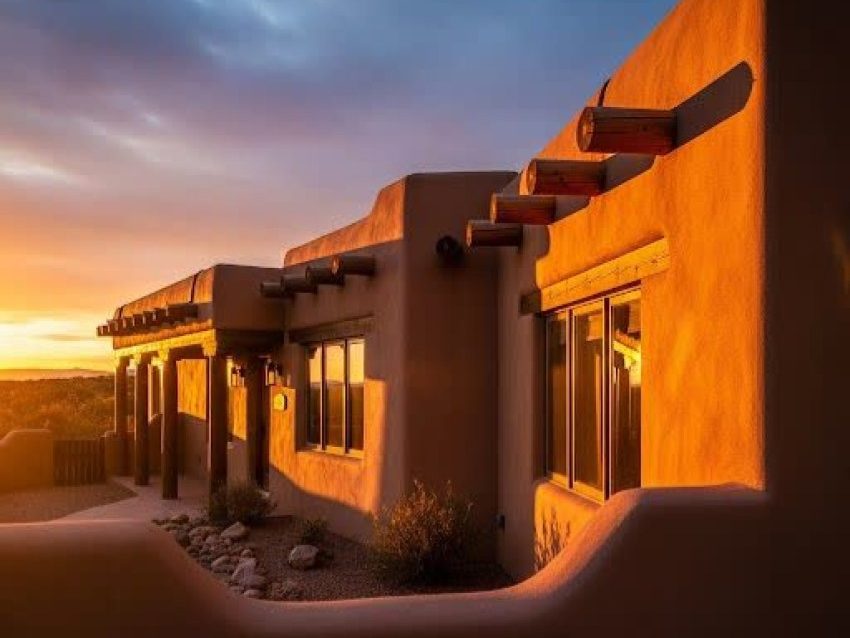
The Heart of an Adobe: What Is Adobe Houses Constructed Of?
Adobe home design at its core is rooted in its very foundation block: adobe bricks. But what are these humble blocks, exactly? Traditional adobe bricks are a marvel of natural construction, typically made up of:
- Sand: Provides strength and reduces shrinkage.
- Clay: Is the binder, which holds the mixture together.
- Water: Moistens the clay and makes the mixture workable.
- Straw or other vegetable fibers: Enhances tensile strength and cracks prevention during drying.
This mixture is molded in wooden molds and sun-dried for several weeks until they become hard. The result is a dense, durable brick that has been used for millennia in arid and semi-arid regions of the world, particularly in the American West, Spain, North Africa, and the Middle East. The ancient technique is an example of green building, taking advantage of locally available, natural material. More recent versions might sometimes include a small quantity of cement or asphalt emulsion as a stabilizer to make them more water-resistant and longer-lasting, especially where there is increased moisture.
Did you ever ask yourself how these ordinary, earthy bricks can construct such long-term and beautiful structures? The answer lies in their weight and the ancient techniques passed down over the generations.
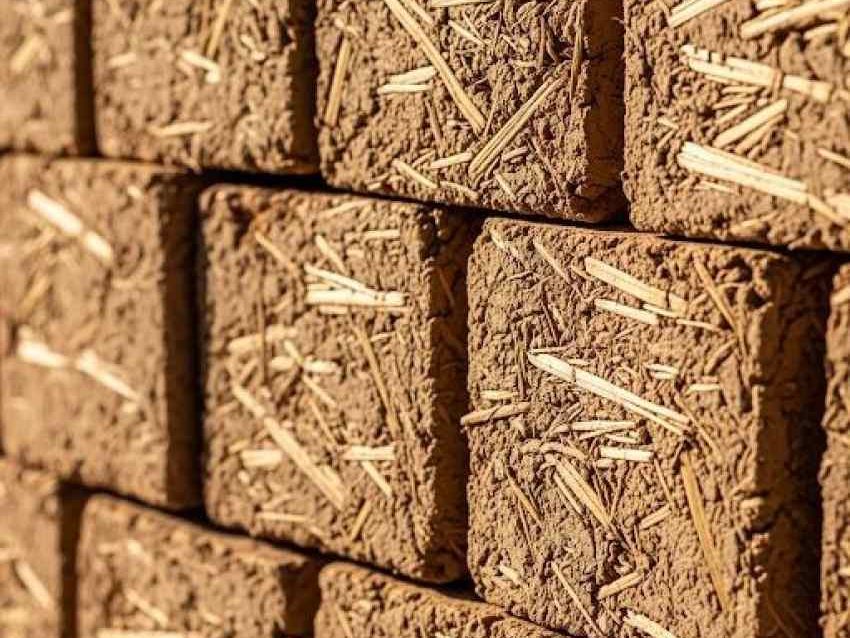
Unlocking Adobe Home Style Interiors: Rustic Charm Meets Modern Comfort
Step through the doors of an adobe house style home, and you are immediately enveloped in a sense of calmness and natural beauty. The thick earth walls provide a defense much more profound than mere shelter; they create a unique ambiance.
Key Elements of Authentic Adobe Style House Interior
Adobe home style house interior is characterized by a series of key elements that combine to produce its unique charm:
- Thick, sculpted walls: Often several feet thick, they are excellent insulators, cooling buildings in the summer and heating them in winter. Surfaces are often hand-plastered, most commonly with mud plaster or lime plaster, and are created in soft, curved lines and with a tactile sense.
- Vigas and Latillas: Wooden ceiling beams exposed (vigas) are a hallmark. Short pieces of wood (latillas) typically cover the vigas in herringbone or straight designs to form the ceiling. Rustic texture and visual appeal derive from them.
- Kiva Fireplaces: These beehive-form or rounded-corner fireplaces are not only functional but also an attractive focal point for family rooms.
- Nichos (Niches): Spaces cut into the thick walls of adobe, nichos are perfect for the placement of art, pottery, or religious iconography, adding depth and personality.
- Bancos: Inset earthen benches, often plastered and integrated into the walls, are cozy seating niches.
- Earthy Color Schemes: Colors tend to be drawn from the landscape itself: terracotta, sand, ochre, muted greens and blues.
- Materials de Nature: Wood, stone, leather, and woven fabrics enhance the earthy colors of the walls. Terracotta or saltillo tile floors are common, occasionally accented with vibrant Talavera tile accents.
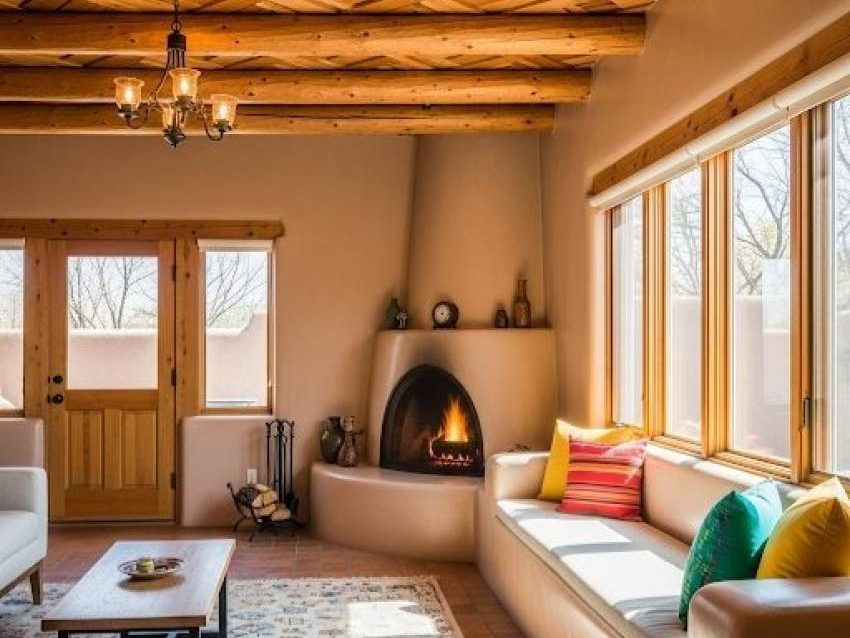
Modern Adobe House: New Interpretation
While traditional adobe residential design is much prized, modern interpretations are injecting this very ancient style with new vitality. A modern adobe house might feature:
- Increased Windows and Open Floor Plans: To provide increased light penetration and a more contemporary circulation.
- Smooth Finishes: Without compromising the earthy walls, modern adobe interiors might introduce smoother plaster finishes, minimal detailing, and contemporary fixtures.
- Technology Integration: One can integrate features of a smart home easily without changing the appearance.
- Green Upgrades: They often come with passive solar design technology, rainwater harvesting, and greywater systems, making them even greener. (To learn about green building, check out organizations like The Earthship Biotecture which, although unique, shares concepts of natural building.)
The beauty of adobe house style is its versatility. It can be rustic and antiquated, or sleek and fashionable, but still retain the essence of its natural authenticity.
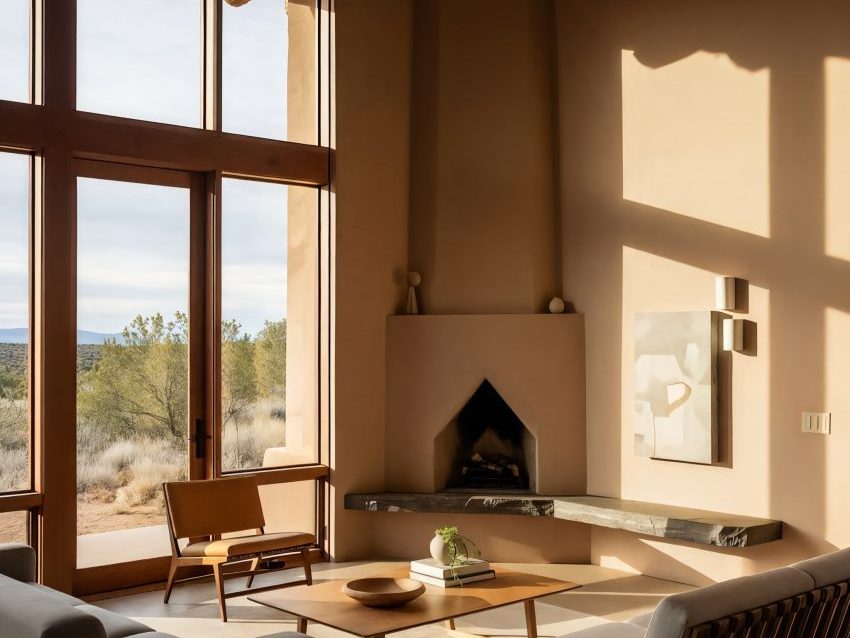
Designing Your Dream: Adobe Style House Plans
If you find yourself intrigued by the prospect of living in an earthen dwelling, then researching adobe style house plans is the next exciting step. Unlike conventional building, designing an adobe house requires attention to the unique nature of the material.
The key things to consider for adobe style house plans are:
- Site Orientation: How to utilize passive solar gain is crucial. South windows can be used to take in winter sun for warmth, and overhangs can shade in the summer.
- Wall Thickness: The dense thickness of the adobe walls has to be considered in the overall footprint and interior layout of space.
- Roof Design: Adobe homes normally had flat roofs with parapets and canales (spouts) for rainwater drainage, but pitched roofs with tile or metal are also employed, especially in areas with more rainfall.
- Basis: A strong basis must be provided to support the burden of adobe walls and maintain them dry below the ground surface. Stem walls are usually used.
- Openings: As adobe is optimal in resisting compression, lintels (wooden or concrete beams) are necessary above doors and windows for load distribution. Care must be taken in the placement and size of openings.
Most architects are specialists in the adobe house design and can custom-design. You can also find stock plans, but be sure that they are customizable to your area’s climate and neighborhood building codes. Adobe construction is a craft, and the plans should be able to adapt to the natural, handmade nature of the construction.
Given what puts your heart in the right place in a home plan is key here. Do you envision yourself in snug, cozy rooms or an open, fluid layout? Both can be achieved with adobe home style.
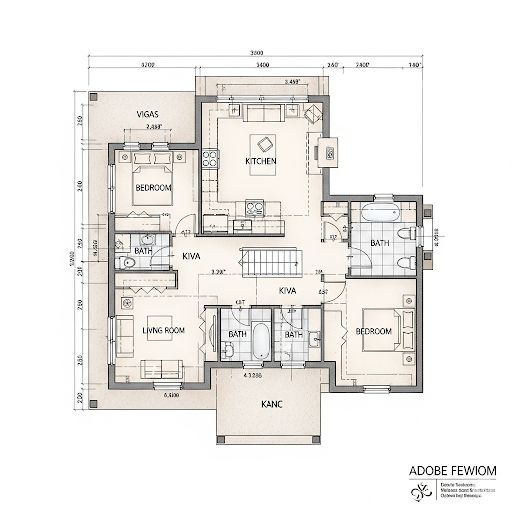
Visual Inspiration: Adobe House Photos That Speak Volumes
At times, words can’t describe adequately the unique beauty and character of adobe home style. That is where adobe house photos come into play. Scrolling through photos of these lovely homes can be a never-ending inspiration source and help you sharpen your own eye.
Select photos that capture:
- Exterior Variations: Ranging from classic Pueblo Revival to newer interpretations, note how different rooflines, window details, and landscaping choices influence the exterior look. Notice the effect of light and shadow on the wall texture.
- Interior Details: Note how different designers and residents have utilized kiva fireplaces, nichos, vigas, and built-in furniture. Examine color schemes, textile choices, and artwork.
- Outdoor Spaces and Courtyards: Many adobe homes have warm courtyards, patios, and portals (covered porches) that extend living space outdoors. These are often at the heart of the adobe home style experience.
- Regional Variations: The New Mexico adobe home style (commonly called Santa Fe style) can be somewhat different from adobes in California or Arizona.
Where do you get this type of inspiration? Architectural magazines (like Architectural Digest) that often features unusual houses), Pinterest, Instagram, and books on Southwestern or earth-based architecture are great sources.
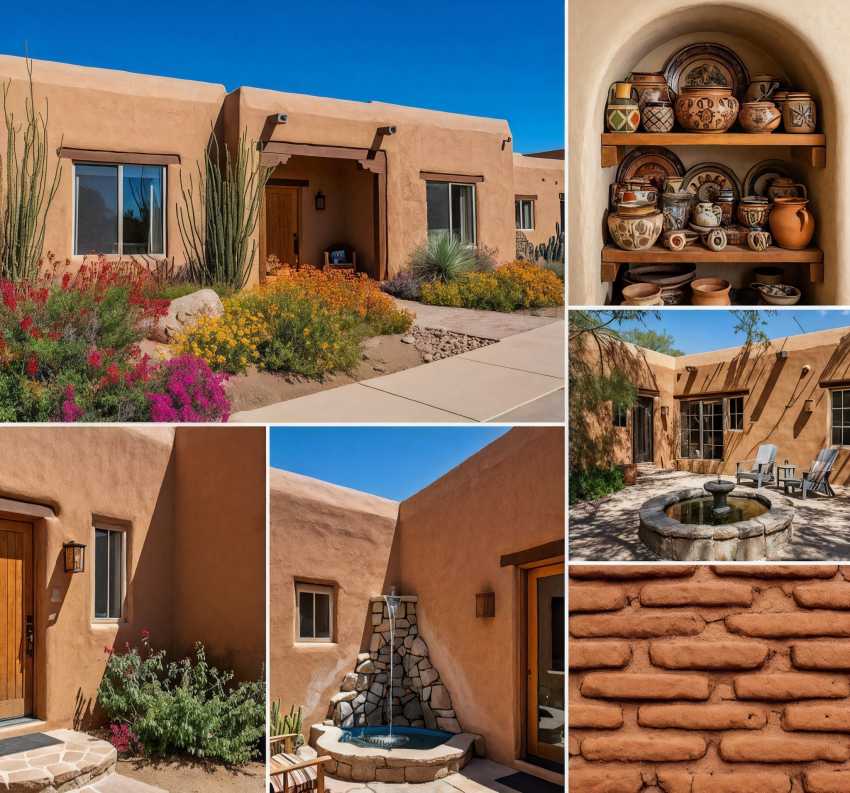
Adobe Home Style Free: Searching for Information and Embracing the Ethos
When one searches for “adobe home style free,” there are a number of things that one could be looking for: free home plans, free information about the style, or perhaps the “free-spirited” ethos of the aesthetic itself.
Although engineer-stamped, high-quality adobe house plans typically cost money due to the expertise involved, there is a wealth of free information to introduce and familiarize you with adobe home style:
- Online Resources: Websites, blogs (like ours here at serenihouse.com!), and forums related to natural building and Southwestern architecture offer articles, guides, and community forums for discussion.
- Public Libraries: The public library in your area may have books on earthen building, vernacular architecture, or regional design styles.
- Documentaries and Videos: Sites like YouTube have numerous videos on adobe building, home tours, and do-it-yourself projects.
- Open Source Design Principles: While specific plans can be proprietary, the fundamental principles of passive solar design, natural material use, and organic forms embodied in adobe home style are open-access principles that you can learn and apply.
Embracing adobe home style is also a question of a certain freedom—freedom from mainstream, mass-market housing; freedom to use natural, indigenous materials; and freedom to create a home that is genuinely individual and personal. The style encourages a more considered and connected way of living.
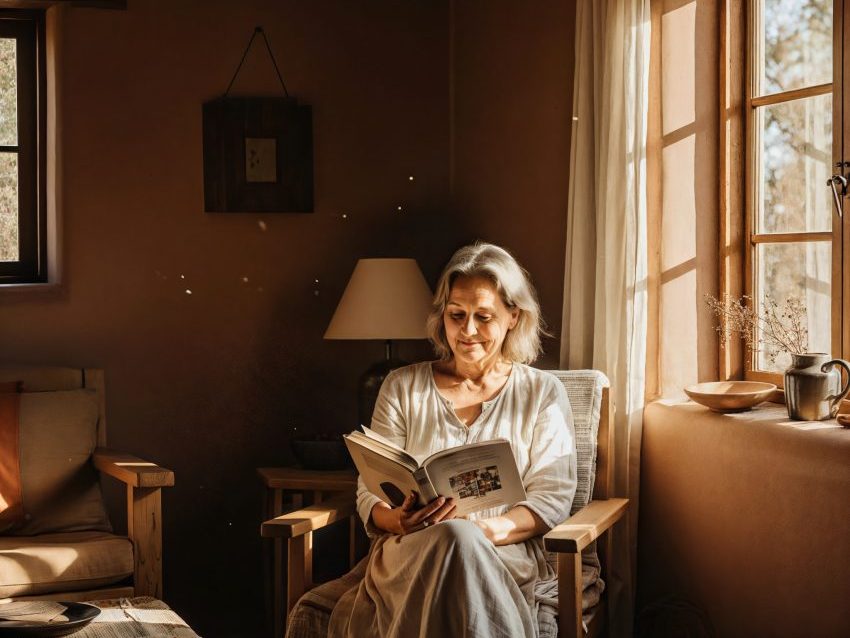
The Difference Between Pueblo and Adobe: Clearing the Confusion
The words “Pueblo” and “Adobe” are often used interchangeably, especially if the context is Southwestern architecture, but there’s a subtle distinction. Being aware of this will contribute to your knowledge and appreciation of adobe home style.
- Adobe: Refers to the material – the earth, water, and occasional straw sun-dried bricks. “Adobe” also refers to a structure that is made from these bricks. Therefore, an adobe house is a house made of adobe bricks.
- Pueblo Style (or Pueblo Revival): Refers to an architectural style based on the Native American Pueblo peoples’ multi-family dwellings (pueblos) in the Southwestern United States. The original pueblos were, and occasionally still are, made of adobe bricks.
Therefore, Pueblo Revival architecture almost invariably uses adobe (or adobe-like material), but not every structure made of adobe bricks is necessarily Pueblo Revival in style. Adobe home style is a more encompassing term for the numerous various kinds of designs made from adobe, including traditional Pueblo, Spanish Colonial, Territorial, and even contemporary interpretations. The common denominator is the use of the earthen material and its own inherent aesthetic.
Think of it this way: adobe is the ingredient, and Pueblo Revival is one of the delicious dishes you can make with it. We delve into various architectural styles more deeply at serenihouse.com
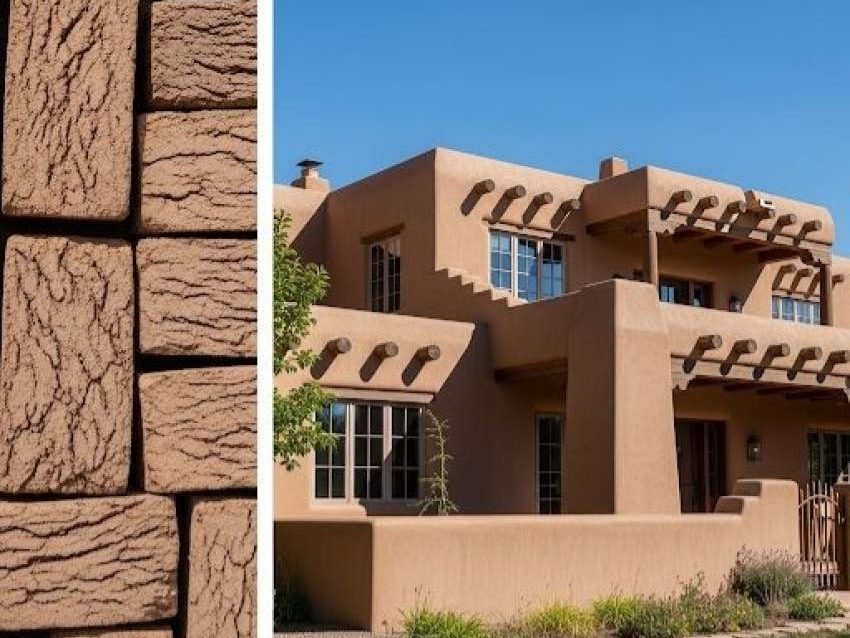
The Timeless Appeal and Benefits of Adobe Home Style
Why has adobe home style captivated humans for centuries, and why is it gaining a modern revival? The reasons are numerous:
- Environmentally friendly and Sustainable: Adobe bricks have low embodied energy as they are sun-dried, not kiln-fired. They are built with locally available, natural materials, which reduce transportation cost and environmental impact. At the end of its life cycle, an adobe building can be taken back to the earth without producing toxic waste.
- Energy Efficiency (Thermal Mass): Adobe walls that are thick and dense have excellent thermal mass. This means they absorb heat slowly during the day and release it slowly at night, which moderates indoor temperatures and reduces heating and cooling bills. This is particularly effective in climates with great diurnal temperature variations.
- Durability and Longevity: Well-maintained adobe buildings can last for centuries. Taos Pueblo in New Mexico, continuously occupied for over 1,000 years, is a testament to the longevity of adobe buildings.
- Fire Resistance: Adobe is non-combustible and therefore offers excellent fire resistance.
- Sound Insulation: The thickness of adobe walls provides good soundproofing, and the interiors are quiet and peaceful.
- Aesthetic Beauty: The soft, curvilinear lines, earth tones, and textured surfaces of Adobe home style create a uniquely beautiful and deeply satisfying aesthetic that encourages a sense of calm and harmony with the natural world.
- Healthy Indoor Environment: Earth plasters are breathable and non-toxic, making indoor air quality superior to that of certain conventional building materials and synthetic paints.
Can you imagine the deep sense of satisfaction that comes from living in a home that is not only beautiful but also kind to the planet? That’s a key part of the adobe home style attraction.
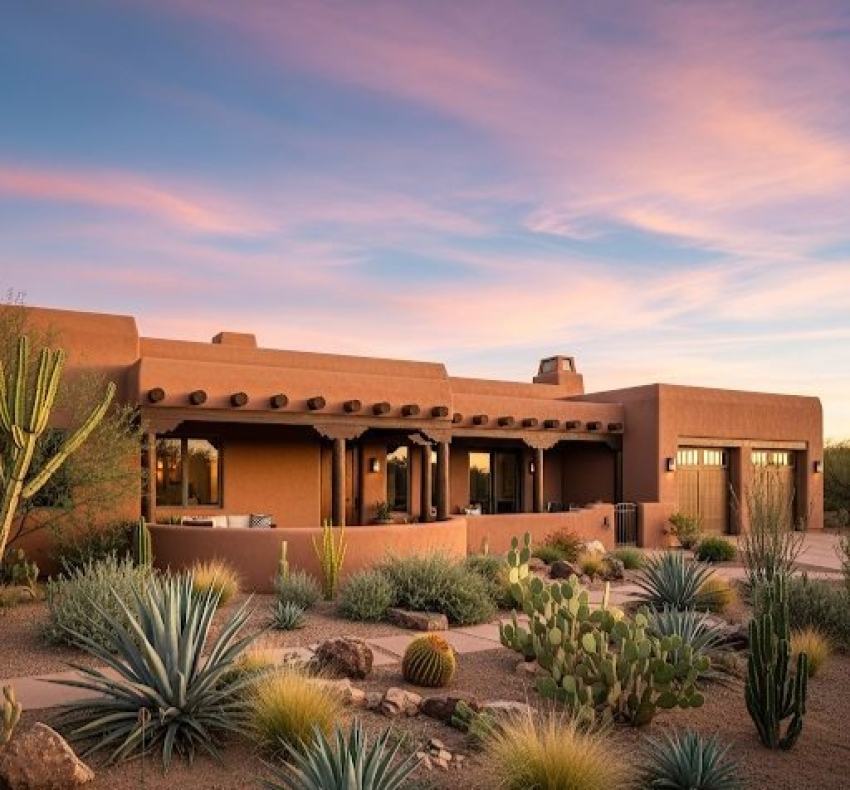
Adobe Home Style Challenges and Issues
Needless to say, the benefits are tempting, but it is also important to take notice of challenges and issues of adobe home style building and ownership:
- Vulnerability to Moisture: Adobe bricks may be prone to water damage if care is not exercised. Proper foundations, roof overhangs, good drainage, and correct exterior plasters or sealants are necessary, especially in more humid climates
- Permits and Building Codes: Obtaining building permits for adobe buildings may be harder in some areas since local building inspectors do not know the material. Building codes for earthen construction are, however, increasingly in demand.
- Skilled Labor and Labor Intensive: Adobe building takes more labor to accomplish than conventional frame building. Trained adobe masons and builders can be difficult to find and will also cost more.
- Pest Control: While not particular to adobe, detailing and properly maintaining is necessary in order to keep pests from digging into walls, particularly if unstabilized soil is used.
- Interior Modifications: It is harder to make modifications to adobe walls (new windows or doorways, for example) than it is to stud walls.
- Resale Value: In less common locations for adobe, there are likely to be some interested buyers who do not know of its benefits, which can impact resale. But in the Southwest, adobe home style is highly desirable.
It’s a process, sure enough. But to the dreamers who are committed, the advantages of an adobe home style residence outplay those disadvantages by far. My personal experience watching adobe homes in New Mexico left me with a profound sense of serenity and a regard for the craftsmanship – it’s similar to living within a sculpture!
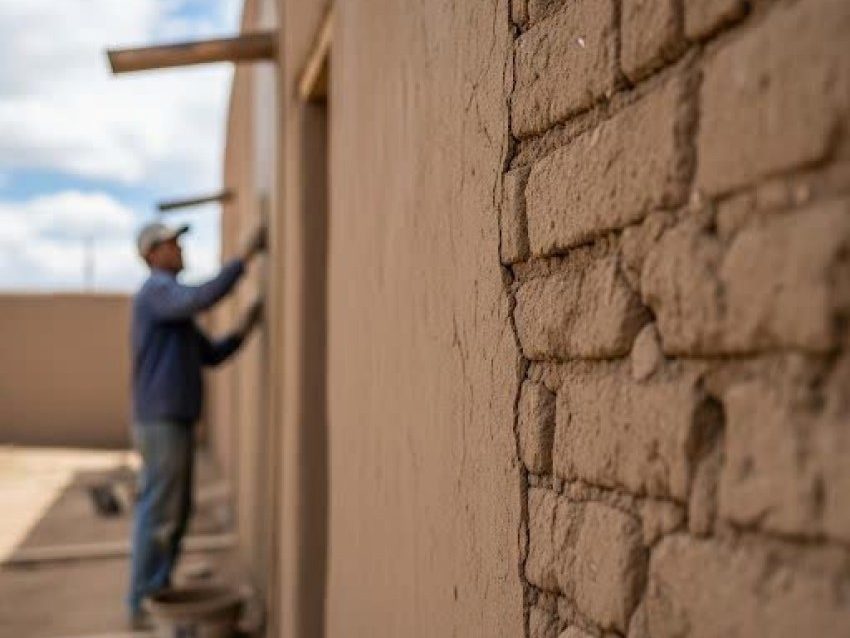
Summary: Why Adobe Home Style?
The enduring popularity of adobe style houses lies in their unique blend of history, art, and environmentalism.
Key Takeaways:
- Authentic Material: Made of earth that has been dried and sun-cured, creating a deep sense of connection to the earth.
- Timeless Aesthetics: Thicker, carved walls, vigas, kivas, and earthy color palettes.
- Green Conscious Living: Low energy inherent within the material, excellent thermal mass for energy retention, and use of natural materials.
- Flexible Design: Ideal for both traditional rustic and cutting-edge modern themes.
- Distinct Character: Each adobe house style building is a unique piece of handcrafted art, an experience unlike any other.
While it does present specific requirements like moisture protection and the need for skilled workers, the benefits of embracing an adobe house design – from its environmental merits to its soul-sustaining atmosphere – are enthralling for those who want a home that is not only beautiful but also transcendent.
Adobe Home Style Frequently Asked Questions (FAQ)
Let’s address some common questions about this fascinating building technique.
Q1: What is an adobe style house?
Adobe style house is a house that is predominantly constructed of adobe bricks, sun-dried blocks of earth, clay, water, and often straw. It is characterized by heavy solid walls, often rounded at the corners, flat or low-pitched roofs, exposed wood beams (vigas), and such features as kiva fireplaces and built-in niches (nichos). It emphasizes natural materials and an organic, handmade aesthetic.
Q2: What is a southwestern style home?
Southwestern style house is a more general design category that encompasses a variety of architectural styles in the American Southwest, including Spanish Colonial, Pueblo Revival, Territorial, and Mission Revival. Adobe house style is a significant component and at times a defining feature of some Southwestern style houses, particularly Pueblo Revival and traditional vernacular structures, due to the historical usage of adobe as the primary material for construction in the American Southwest.
Q3: What is the meaning of adobe housing?
Adobe housing refers to the shelter constructed out of adobe bricks. The word transcends the material; it evokes a feeling of heritage, greenness, and a certain beauty that is tactile, weighty, and often breathtakingly mixed with its surroundings. It is a building technique used for thousands of years, offering thermal comfort and utilizing regional materials.
Q4: What is the difference between Pueblo and adobe?
Adobe is the material, sun-dried clay bricks. Pueblo (or Pueblo Revival) is a type evolved from the multi-story, communal dwellings of the Southwest’s Native Pueblo peoples, traditionally made of adobe bricks. Thus, a Pueblo style house is typically an adobe house type house, but not every adobe house necessarily is built in the strict Pueblo Revival fashion.
I hope that stroll through the door to adobe home style has been inspiring for you! It’s a style which resonates so deeply with all those of us who adore history, craftsmanship, and connecting with the earth.
What’s your take on adobe home style? Do you dream of waking up in a earthen house, or maybe you already do? Share your experiences and questions in the comments below , I’d love to hear from you!
Don’t forget to share this article with anyone that might be interested in this strange architecture style. And if you’re hungry for even more design ideas, don’t forget to read about other articles on serenihouse.com! Perhaps our article on “Bringing Natural Elements Indoors” would be your next favorite read?
